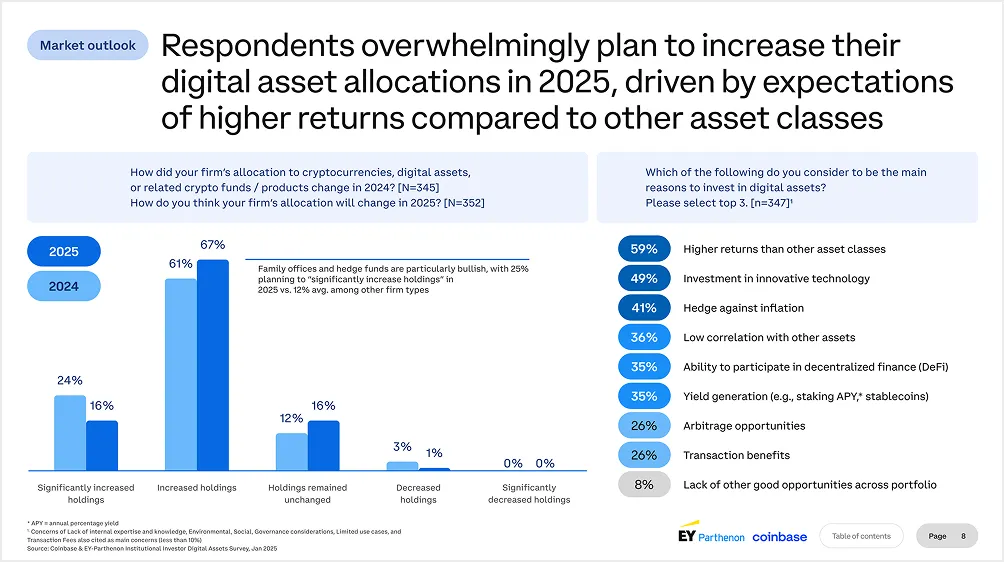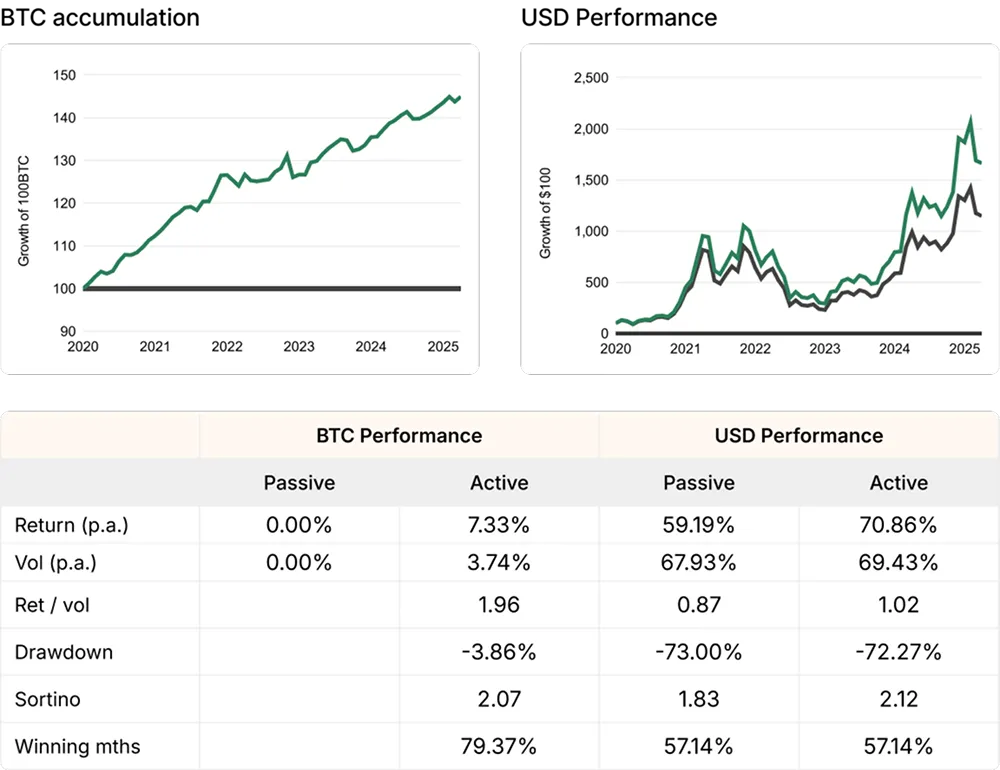

Asset management in crypto: What investors need to know | Image by Randy Fath
Asset management in crypto: What investors need to know | Image by Randy Fath
This article explores what crypto asset management is, why it matters now more than ever, the advantages of active vs. passive strategies, key portfolio tactics, and how institutions can select the right partners to navigate this fast-evolving space.
What is crypto asset management and why does it matter?
Crypto asset management refers to the disciplined and professional oversight of investments in digital assets, including cryptocurrencies like Bitcoin and Ethereum, stablecoins, tokenized real-world assets (RWAs), and decentralized finance (DeFi) instruments. This includes a broad range of digital asset types, emphasizing the need for specialized management services. It encompasses portfolio construction, yield generation, custody, risk management, tax structuring, and compliance.
In 2025, the relevance of crypto asset management is only growing:
- Institutional capital is rising at scale: According to a Coinbase Institutional survey, 75% of institutional investors plan to increase their crypto allocations this year. Many are moving beyond core holdings like BTC into more sophisticated strategies, including yield generation, stablecoin-based liquidity, and tokenized assets.
- Market infrastructure has matured: From spot Bitcoin ETFs to regulated custodians and secondary market access, barriers to entry are falling.
- Use cases are expanding: Digital assets are powering everything from on-chain treasury yield to tokenized capital formation and global payments.
Why active management is especially relevant in crypto
Unlike traditional markets, crypto’s DNA is fast-moving, fragmented, and inefficient, ideal for active strategies. Here’s why active management is becoming the dominant approach:
- Volatility creates opportunity. Crypto markets swing more than most. Active managers can capture upside, manage risks associated with market swings, and mitigate drawdowns.
- Low correlation enables alpha. Crypto assets often behave independently from traditional stocks and bonds, creating diversification benefits.
- Always-on market structure. Trading never stops. Managers can respond in real time to news, regulatory moves, and technical signals.
- Inefficiencies persist. Thin liquidity, fragmented pricing, and protocol-specific risks create room for strategic edge.
This was the core message at Strategy 2025, where our Group CIO Javier Rodriguez-Alarcon joined Michael Saylor on stage to discuss how institutions are rethinking Bitcoin - not as a speculative asset, but as a working one.
Active vs. Passive management in the crypto market
Let’s break down the trade-offs between the two dominant approaches:
- Approach: Buy and hold, usually Bitcoin and Ethereum.
- Benefits: Low fees, simplicity, long-term exposure.
- Limitations: No downside protection. Ignores short-term inefficiencies and macro trends.
- Approach: Dynamic rebalancing, derivatives usage, thematic allocation, and comprehensive portfolio management as a core component of active management.
- Benefits: Higher risk-adjusted returns, drawdown management, yield harvesting. Effective market analysis is essential for identifying opportunities and making informed decisions in active management.
- Limitations: Requires expertise, infrastructure, real-time execution.
If we compare two approaches to Bitcoin exposure, passive holding versus active management, the difference is not just incremental. It’s transformative. Passive holders simply retain their coins, fully exposed to market direction. They benefit when BTC appreciates and endure the drawdowns when it doesn't. There’s no yield, no efficiency, only beta.
In contrast, active strategies are designed to work with the asset’s volatility. Through disciplined put selling, careful entry timing, and structured reallocation, exposure is grown tactically. Coin accumulation becomes part of the strategy, not just a side effect of buying the dip.
In practice, this results in steady, organic BTC growth, over 7% annually, without deploying new capital. And it’s done through risk-aware positioning, not aggressive leverage or speculative chasing. These are conservative frameworks, built to monetise volatility when the profile is favourable, and to step back when it’s not.
That accumulation matters. Because as BTC appreciates, those additional coins compound. What begins as a modest edge in BTC holdings becomes a material advantage in USD performance. Annual returns climb from 59% to over 70%, while volatility remains almost unchanged.
This isn’t about predicting where Bitcoin will go. It’s about making sure you’re structurally positioned to benefit, wherever it goes.
Key strategies for effective crypto asset management
Professional crypto asset management blends time-tested principles with digital-native tools. Crypto asset management tools play a crucial role in supporting these strategies, enabling professionals to efficiently manage and optimize portfolios. A wide range of investment products and investing options are available, allowing for effective management and diversification of crypto assets. Here are the core tactics:
Institutional portfolio models for 2025
Different objectives call for different models - but tested frameworks offer structure:
Leading companies in the crypto asset management space offer a comprehensive suite of portfolio models and solutions designed specifically for institutional investors. Each company may tailor its approach to meet the unique needs and objectives of institutional clients. These companies provide expertise in portfolio management, risk mitigation, and digital asset diversification, helping institutions navigate the evolving landscape of crypto investments.
- 60% Core Holdings: Bitcoin and Ethereum
- 30% Alts and Themes: DeFi, L1s/L2s, RWAs, tokenized instruments
- 10% Stable/Yield: USD stablecoins, tokenized treasuries
This mirrors traditional 60/40 portfolios by combining long-term exposure with tactical growth and a liquidity buffer, helping investors gain exposure to a range of assets and maximize portfolio value.
How to choose the right crypto asset manager
Not all managers are created equal. Top managers provide tailored services for both individual and institutional clients, safeguarding client assets and leveraging the expertise of crypto experts and institutional asset managers. Institutions should evaluate based on five core pillars:
1. Track record and strategy alignment
- Have they performed across market cycles?
- Do they have a clear investment philosophy - not just hype?
2. Infrastructure and custody
- Are they integrated with institutional-grade custodians?
- Do they support multi-venue execution (CEX, DEX, OTC)?
3. Transparency and reporting
- Can they deliver real-time dashboards, monthly updates, and audit-ready records?
- Do they operate under clear SLAs?
4. Risk management culture
- What’s their approach to position sizing, VaR limits, and slippage control?
- Do they use on-chain analytics to monitor smart contract risks?
5. Regulatory footprint
- Are they licensed in top jurisdictions (e.g., ADGM, Bermuda, EU)?
- Can they work with banks, sovereign funds, or regulated funds?
Due diligence matters. Institutions should review counterparty stability, capital adequacy, insurance coverage, and compliance history.
Active management is a must
Crypto is now part of the institutional playbook - but that doesn’t mean it can be managed casually. With proper strategy, infrastructure, and oversight, digital assets can enhance diversification, generate income, and deliver uncorrelated returns. But the complexity demands expertise.
Financial professionals, including financial advisors, crypto investors, and individual investors, all benefit from the expertise and support of digital asset companies, blockchain companies, and specialized businesses when navigating the cryptocurrency market. Leading digital asset companies and blockchain companies provide access to the largest crypto index fund and exclusive private funds, offering expert investment advice and tailored solutions for every type of investor.
It’s time to treat crypto not as a side bet, but as a core position - managed with the same rigor as any other asset class.
The full breakdown
In our first article, "Navigating Crypto Volatility: The Advantages of Active Management," we explored how the high volatility and low correlation of digital assets with traditional asset classes create unique opportunities for active managers. We discussed how these characteristics enable active managers to execute tactical trading strategies, capitalizing on short-term price movements and market inefficiencies. Building on that foundation, we now turn our attention to the unique market microstructure of digital assets.
Conducive market microstructure of digital assets
The market microstructure of digital assets - a framework that defines how crypto trades are conducted, including order execution, price formation, and market interactions - sets the stage for active management to thrive. This unique ecosystem, characterized by its continuous trading hours, diverse trading venues, and substantial market liquidity, offers several advantages for active management, providing a fertile ground for sophisticated investment strategies.
24/7/365 market access
One of the defining characteristics of digital asset markets is their continuous, round-the-clock operation.
Unlike traditional financial markets that operate within specific hours, cryptocurrency markets are open 24 hours a day, seven days a week, all year round. This continuous trading capability is particularly advantageous for active managers for several reasons:
- Immediate response to market events: Unlike traditional markets that close after regular trading hours, digital asset markets allow managers to react immediately to breaking news or events that could impact asset prices. For instance, if a significant economic policy change occurs over the weekend, managers can adjust their positions in real-time without waiting for markets to open.
- Managing volatility: Continuous trading provides more opportunities to capitalize on price movements and volatility. Active managers can take advantage of this by implementing strategies such as short-term trading or hedging to mitigate risks and lock in gains whenever market conditions change. For instance, if there’s a sudden drop in the price of Bitcoin, managers can quickly sell their holdings to minimize losses or buy in to capitalize on the lower prices.
Variety of trading venues
The proliferation and variety of trading venues is another crucial element of the digital asset market structure. The extensive landscape of over 200 centralized exchanges (CEX) and more than 500 decentralized exchanges (DEX) offers a wide array of platforms for cryptocurrency trading. This diversity is beneficial for active managers in several ways:
- Risk management and diversification: By spreading trades across various exchanges, active managers can mitigate counterparty risk associated with any single platform. Additionally, the ability to trade on both CEX and DEX platforms allows managers to diversify their strategies, incorporating different levels of decentralization, regulatory environments, and security features.
- Arbitrage opportunities: Different venues often exhibit price discrepancies, presenting arbitrage opportunities. For example, managers can buy an asset on one exchange at a lower price and sell it on another where the price is higher, thus generating risk-free profits.
- Access to diverse liquidity pools: Multiple trading venues provide access to diverse liquidity pools, ensuring that managers can execute large trades without significantly impacting the market price.
Spot and derivatives markets (Variety of instruments)
The seamless integration of spot and derivatives markets within the digital asset space presents a considerable advantage for active managers. With substantial liquidity in both markets, they can implement sophisticated trading strategies and manage risk more effectively.
For instance, as of August 8 2024, Bitcoin (BTC) boasts a daily spot trading volume of $40.44 billion and an open interest in futures of $27.75 billion. Additionally, derivatives such as futures, options, and perpetual contracts enable managers to hedge positions, leverage trades, and employ complex strategies that can amplify returns.

Overall, the benefits for active managers include:
- Hedging and risk management: Derivatives offer a powerful tool for hedging against unfavorable price movements, enabling more efficient risk management. For instance, a manager holding a substantial amount of Bitcoin in the spot market can use Bitcoin futures contracts to safeguard against potential price drops, thereby enhancing risk control.
- Access to leverage: Managers can use derivatives to leverage their positions, amplifying potential returns while maintaining control over risk exposure. For instance, by employing options, a manager can gain exposure to an underlying asset with only a fraction of the capital needed for a direct spot purchase, thereby enabling more capital-efficient investment strategies.
- Strategic flexibility: By integrating spot and derivatives markets, managers can implement sophisticated strategies designed to capitalize on diverse market conditions. For instance, they may engage in volatility selling, where options are sold to generate income from market volatility, regardless of price direction. Additionally, managers can leverage favorable funding rates in perpetual futures markets to enhance yield generation. Basis trading, another strategy, involves taking offsetting positions in spot and futures markets to profit from price differentials, enabling returns that are independent of market movements.
Exploiting market inefficiencies
Digital asset markets, being relatively nascent, are less efficient compared to traditional financial markets. These inefficiencies arise from various factors, including regulatory differences, market segmentation, and varying levels of market maturity. For example:
- Pricing anomalies: Phenomena like the "Kimchi premium," where cryptocurrency prices in South Korea trade at a premium compared to other markets, create arbitrage opportunities. Managers can exploit these by buying assets in one market and selling them in another at a higher price.
- Exploiting mispricings: Active managers can identify and capitalize on mispricings caused by market inefficiencies, using strategies such as statistical arbitrage and mean reversion.
The unique aspects of the digital asset market structure create an exceptionally conducive environment for active management. Continuous trading hours and diverse venues provide the flexibility to react quickly to market changes, ensuring timely execution of trades. The availability of both spot and derivatives markets supports a wide range of sophisticated trading strategies, from hedging to leveraging positions. Market inefficiencies and pricing anomalies offer numerous opportunities for generating alpha, making active management particularly effective in the digital asset space. Furthermore, the ability to hedge and manage risk through derivatives, along with exploiting uncorrelated performance, enhances portfolio resilience and stability.
In our next article, we'll delve into the various techniques active managers employ in the digital asset markets, showcasing real-world use cases.
Read full disclaimer














